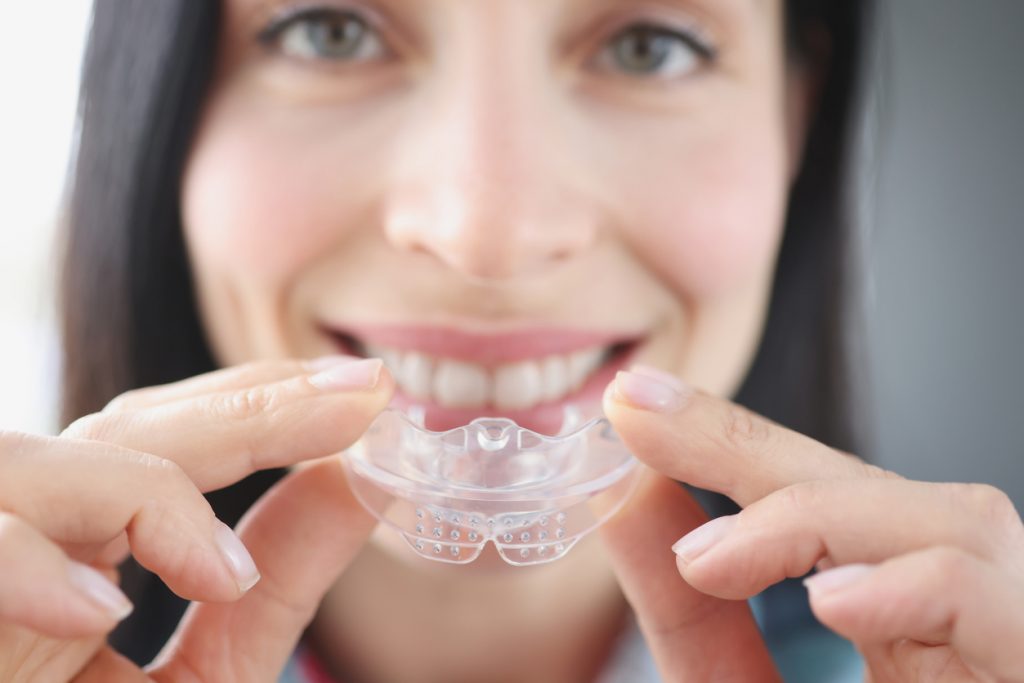Bruxism and TMD: Breaking the Cycle of Jaw Pain and Teeth Grinding

In the hustle and bustle of our daily lives, stress often finds a way to manifest itself physically. One common way this occurs is through bruxism, the medical term for teeth grinding. Another physical manifestation of stress is through Temporomandibular Joint Disorder (TMD). These conditions not only affect our oral health but also have a significant impact on our overall well-being. This blog post aims to shed light on bruxism and TMD, exploring their causes, symptoms, and most importantly, how to break the cycle of jaw pain and teeth grinding.
Understanding Bruxism
Bruxism is a condition characterized by the involuntary grinding, clenching, or gnashing of teeth, usually occurring during sleep. While occasional teeth grinding might not cause significant harm, chronic bruxism can lead to various issues such as worn enamel, tooth sensitivity, and even fractures. Stress, anxiety, and sleep disorders are common triggers for bruxism, making it important to address these underlying causes.
Decoding Temporomandibular Joint Disorder (TMD)
TMD refers to a group of conditions that cause pain and dysfunction in the jaw joint and the muscles controlling jaw movement. It can result from several factors, including injury, arthritis, or, often, the clenching of teeth associated with bruxism. TMD manifests through symptoms such as jaw pain, clicking or popping noises when opening the mouth, and difficulty chewing. It not only causes physical discomfort but also affects daily activities, including eating and talking.
Breaking the Cycle
Now that we know what causes us to wake up with a painful jaw, let’s talk about how to break free from the clutches of bruxism and TMD.
- Stress Management: Since stress is a significant contributor to both bruxism and TMD, learning stress management techniques such as meditation, yoga, or deep breathing exercises can be incredibly beneficial. By reducing stress levels, the frequency and intensity of teeth grinding can be diminished.
- Custom Mouthguards: Dentists, like Dr. Postol, often recommend custom-fitted mouthguards, also known as occlusal splints, to prevent teeth grinding. These devices create a barrier between the upper and lower teeth, protecting them from the damaging effects of grinding and clenching. Wearing a mouthguard while sleeping can significantly reduce the impact of bruxism.
- Physical Therapy: For TMD patients, physical therapy exercises can help strengthen jaw muscles and improve joint mobility. These exercises, recommended by a healthcare professional, can alleviate pain and enhance the overall function of the jaw.
- Avoiding Trigger Foods: Certain foods and drinks, such as caffeine, alcohol, and chewing gum, can aggravate the symptoms of TMD. Caffeine can cause your muscles to tense and alcohol can overstimulate and cause teeth grinding. Gum can overwork the jaw muscles and aggravate TMD symptoms. Limiting the consumption of these items can help manage jaw pain and discomfort.
- Professional Dental Care: Regular dental check-ups are crucial for individuals suffering from bruxism and TMD. Dentists can identify signs of teeth grinding, provide appropriate treatments, and offer guidance on managing these conditions effectively.
Bringing It All Together
Bruxism and TMD can significantly impact our quality of life, but breaking the cycle of jaw pain and teeth grinding is possible with the right approach. By addressing the root causes, practicing stress management techniques, and seeking professional dental care, you can alleviate your symptoms and prevent further damage. Taking proactive steps towards oral health ensures a pain-free jaw enabling us to face each day with a brighter, healthier smile.

Ready to Bid Farewell to Jaw Pain and Teeth Grinding?
Take the first step towards a pain-free smile today. Don’t wait – consult with Dr. Postol and embrace a healthier, happier you. Your journey to breaking the cycle starts now!
